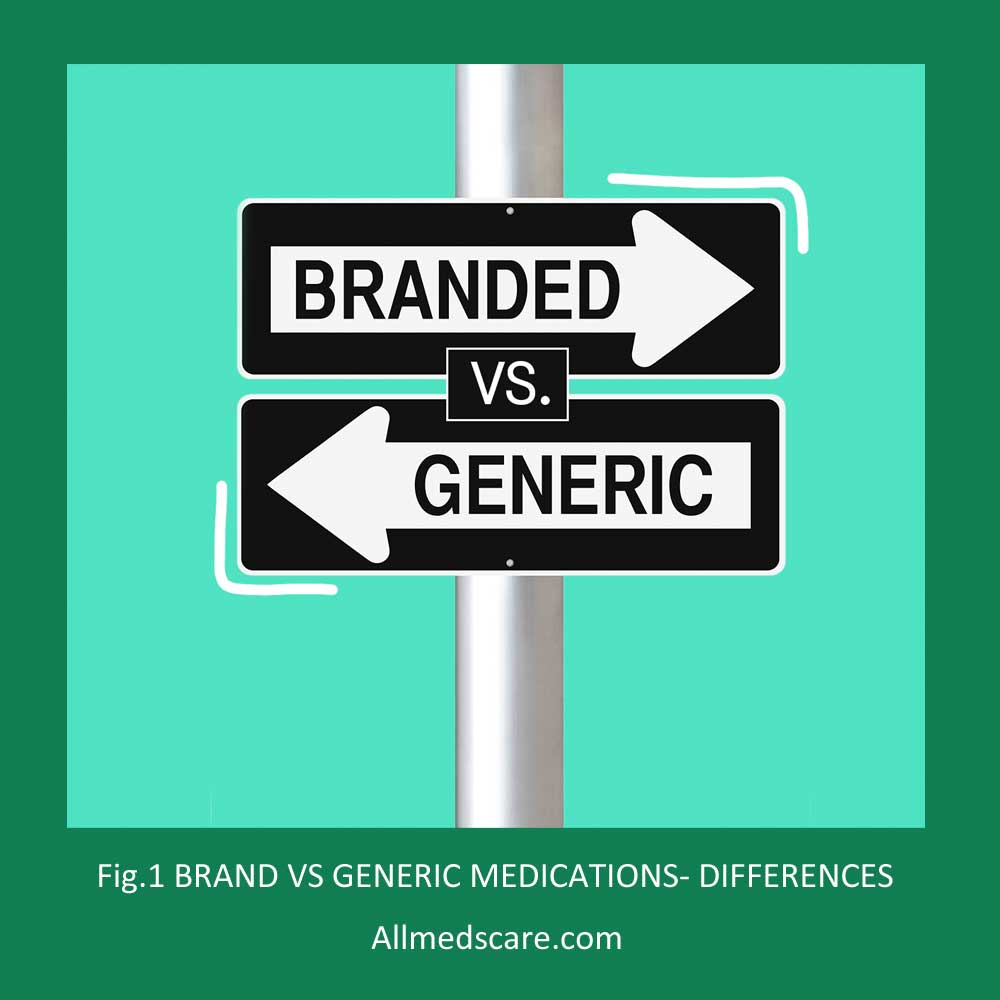
Exploring the Differences Between Brand and Generic Medicine
Brand and Generic medicines treat a range of diseases and health issues. However, there are many differences between these two types of drugs, which can vary widely in their effectiveness, safety, cost, and availability. Pharmaceutical companies develop brand-name medications under the protection of patents. The medications undergo stringent quality assurance procedures before they are available to consumers.
The U.S. Food & Drug Administration (FDA) approves the sale of generic drugs. This is done on expiry of original patent or been waived. Generic drugs may contain different inactive ingredients than brand medicines. They are also approved for sale by the FDA. The generics are therapeutically equivalent and contain the same active ingredients. are In this post, I will explore the difference between brand-name and generic medications in terms of the manufacturing process, the regulatory safeguards for quality control, and an assessment of the benefits and drawbacks of using each kind of medication.

Manufacturing Process of Brand Medicine
- Understanding the manufacturing of Brand Medication: The manufacturing process is a complex series of steps. The main aim is product efficacy and safety. The first step includes selecting the active ingredient or ingredients. The ingredient must pass quality control, then combined with heavy substances like binders, fillers, coloring agents, etc. The combination is put through several tests. This ensures that it contains all the necessary components and complies with the established requirements. After the drug is packaged in customized dosage forms (capsules/tablets) and authorized by quality control experts, the drug is prepared for distribution.
- Examining Quality Control Measures in Place: The government organizations implements numerous regulatory procedures to ensure that customers receive safe and effective medicines from pharmaceutical corporations. The U.S. Food & Drug Administration (FDA) mandates that manufacturers strictly follow their Good Manufacturing practices, which include thorough documentation procedures at each stage of the production process. This ensures traceability from raw materials through the final packaging stages and provides an audit trail if any problems arise during production or use of the product after its launch on the market. FDA regularly inspects medication manufacturing facilities to improve consumer safety. In case of any discrepancies; corrective action plans must be submitted within specific periods before plant operations can recommence.
Manufacturing Process of Generic Medicine
- Understanding the manufacturing process : Generic medications are similar to brand drugs. FDA must approve them for sale for them to have the same therapeutic efficacy and active components as their brand-name counterparts. The first step in the manufacturing process is the selection of suitable raw materials for the creation of the medicine. These ingredients should pass stringent quality control checks. After achieving this, producers will package dosages into capsules or pills customized for each medication. The medication is sent to stores all around the country. It is ready for purchase.
- Examining Quality Assurance Practices Used: Government agencies like the U.S. Food & Drug Administration (FDA) have put in place several regulatory procedures to ensure the efficacy and safety of generic medications. To ensure traceability from raw materials through the final packaging stages and to provide an audit trail should any problems arise during the use after the launch of the product’s marketing campaign, these agencies demand strict adherence from pharmaceutical companies when manufacturing and distributing their products. FDA regularly inspects pharmaceutical manufacturing plants to improve consumer safety. If any discrepancy is found, a corrective action plan must be submitted within a specified time limit.
Evaluating the Pros and Cons of Using Brand and Generic medicines
- Understanding the Advantages of Brand Medicine: Brand-name drugs have many advantages that are worth considering. Pharmaceutical companies put these drugs through extensive testing and quality assurance procedures to make sure they were safe and effective. Additionally, brand-name medications can provide more thorough treatment alternatives because they have a greater variety of therapeutic effects; this is particularly useful for treating complex medical diseases. In addition, many people feel comforted knowing they are utilizing a medication that has been approved by a respectable organization and offers assurance regarding its efficacy and potential negative effects.
- Exploring the Benefits of Generic Medicine: When it comes to cost savings, generic drugs can also offer many advantages over branded drugs. Since generic versions are not subject to patent restrictions, manufacturers can control costs by reducing costs associated with product development and research, as well as avoiding expensive marketing campaigns. Additionally, Generic medications should pass strict regulatory measures set by governmental organizations like the U. S. Food & Drug Administration (FDA), which guarantees their safety and effectiveness. This gives you peace of mind knowing that you will receive high-quality care at a reasonable cost.
Regulatory Measures to Ensure Quality
In addition to the regulatory requirements stated by the U.S. Food & Drug Administration, there are several other organizations in place to help ensure quality control of both brand-name and generic medications. The World Health Organization (WHO) establishes international standards for drug manufacturing and testing.
This helps ensure consistency between markets across different countries, so consumers can buy medications from abroad with confidence. Pharmaceutical companies follow their internal policies with an intent to keep an eye on the efficiency of production processes. These policies frequently include routine inspections of every stage of manufacturing as well as verification of compliance with current Good Manufacturing Practices (GMP). Additionally, before releasing a drug in the market; third-party organizations like the National Institute For Quality Assurance (NIFQA) may carry out inspections. This ensures that drugs confirm to effectiveness and safety standards.
Conclusion
In conclusion, consumers can benefit from both brand-name and generic medications. Brand prescriptions can guarantee greater levels of safety and efficacy due to their thorough testing processes, although generic drugs may be more affordable for people on a tight budget.
In the end, choosing between brand-name and generic medications, it is crucial to consider your individual needs and preferences to choose the treatment that will work best for you.






